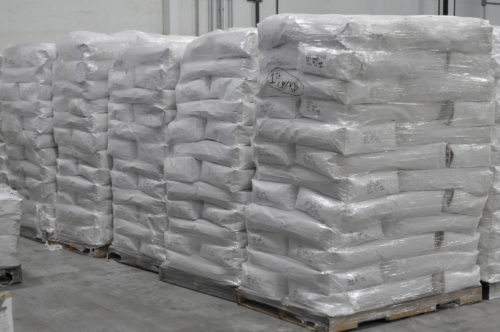All About Hydrophobic Treated Silica Products
Comments Off on All About Hydrophobic Treated Silica ProductsApplied Material Solutions (AMS) is a Wisconsin-based company that manufactures high-quality hydrophobic treated silica products, including both precipitated and fumed varieties. By leveraging our unique range of manufacturing capabilities, our expert team produces a wide range of silica products for use in a diverse set of industries.
The following blog post provides an overview of hydrophobic treated silica products, outlining the chemical properties, applications, and solutions available from AMS.
Chemical Properties of Hydrophobic Treated Silica
In addition to its hydrophobic—i.e., water-repelling—properties, treated silica demonstrates several characteristics that make it well-suited for use in a wide range of applications. As an ingredient in other materials and products, it offers the following benefits:
- Foam control. It serves as a key active ingredient in many foam control products, such as antifoaming agents, defoamers, and deaerators.
- Powder free flow encouragement. It facilitates the free flow of powdered substances that have a tendency to “cake” or clump together. It also enhances their storage stability.
- Processing improvements. The utilization of treated silica allows for optimal processability, hydrophobicity control, thickening, thixotropy, rheology control, and suspension and stability behavior. For example, motionless particles can be restored to their original level of viscosity with a minimum expenditure of energy.
- Adsorbent qualities. It can adsorb compounds in gaseous, liquid, or solid states and act as a carrier that allows for the conversion of liquids and pastes into powders.
- Anti-blocking, anti-sagging, anti-setting, and anti-setoff attributes. An example of an application in which these qualities are critical is in anti-setoff spray powder, which industry professionals use to maintain an air gap between printed sheets of paper to prevent ink bleed-through.
- Mechanical improvements. It can improve tensile strength, elongation at break, and tear resistance and help minimize the effect of temperature on mechanical properties.
- When used in materials, such as polymers, it reinforces both strength and structure.
- Pigment stabilization and dispersion. It can prevent or delay the sedimentation of solids in liquid systems, as well as disperse sediments that have already settled, break down solid particles, and stop such particles from recombining.
- Print definition enhancements. The resolution and print quality of toners can be significantly improved through the use of hydrophobic treated silica.
- Thermal insulation. Amorphous silicon dioxide is a highly non-conductive material, making it an excellent choice for thermal insulation applications.
Common Applications of Hydrophobic Treated Silica
Hydrophobic treated silica finds application in a variety of materials and products. Some of its most common uses include:
- Defoamers and antifoams
- Demulsifiers
- Fire extinguishers
- Silicone rubber
- Silicone sealants
- Greases
- Paints and coatings
- Plastics
- Polyester resins
- Cosmetics
- Inks and toners
Hydrophobic Treated Silica Solutions From AMS
At AMS, we manufacture treated silica products for a myriad of customer applications. Armed with years of silica treatment manufacturing experience and a modern manufacturing facility, our team can produce an array of products across a wide range of particle sizes, hydrophobicity levels, and surface areas to suit our customers’ needs.
From development to production to testing and regulation, AMS strives to meet the requirements outlined by our customers and to provide the highest level of quality, accuracy, and performance. In doing so, we aim to minimize customer investment—both in regard to time and money—and maximize customer satisfaction.
For additional information about our treated silica solutions, contact us today.



